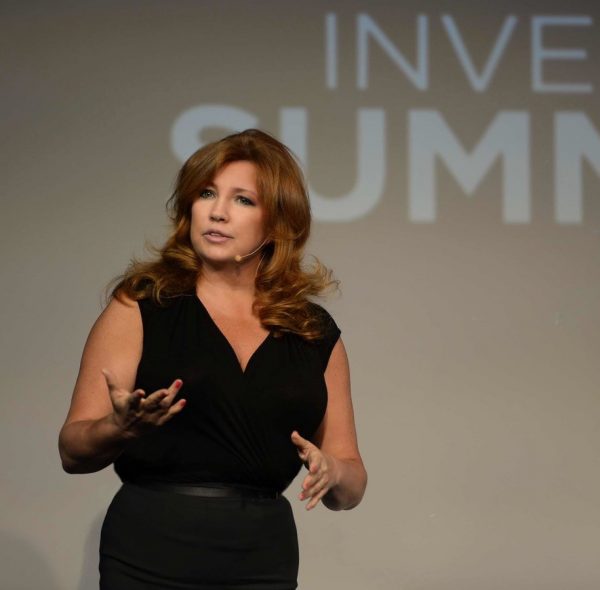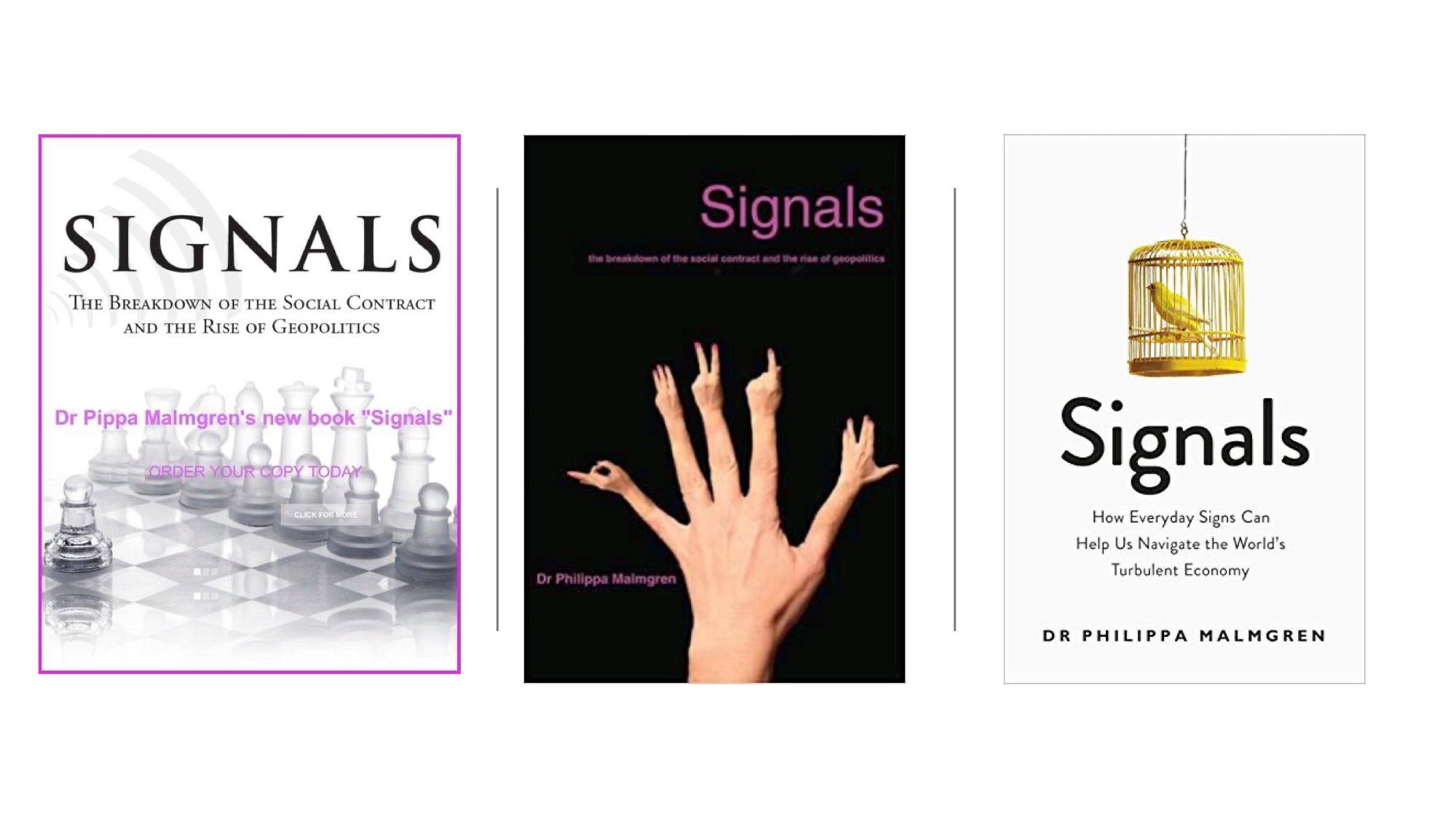 Back
Back
How to crowdfund and self-publish your bestseller. By Pippa Malmgren
Pippa Malmgren worked in the White House and advised top banks. Here’s how she self-published a bestselling book — and how you can too.

As an economist, I think everyone has a story to tell. The least utilised asset in the world economy is human potential. So, once you have identified your story, here are some suggestions for how to write a book and get it published.
During the 2008 financial crisis, I had a strong view on the likely social impact, and I wanted to write a book. But I didn’t have a literary agent and the publishers I spoke to said nobody was interested in economics. It’s a dead subject. I had credentials. I’d been an advisor to the President of the United States through several crises including Enron and 9/11. I’d been the Chief Currency Strategist and had run strategy for some of the world’s largest investment banks. I’d been privileged to know how decisions were being made. I had a story to tell. I wanted to write a book for a regular person and help them understand what the hell was going on in the world economy, why populism was rising and why geopolitics would soon surge back into the headlines. It was 2015. The publishers said no.
So, I decided to crowdfund the book. No one had tried this with a traditional economics book. But the crowdfunding campaign ended up raising 264% of the target in a few weeks and became an Amazon bestseller in a matter of days. The best agency in the world, William Morris Endeavor, became my agent. Amazing things happened. A traditional publisher picked up my book and it went global in many languages.
Here are some things I learned that might help an aspiring author. You do not need a literary agent or a publisher. Just start:
1- Write about what you feel passionately about. Find something to say that only you can tell us about. Something that your personal experience makes your story — and if other people knew it, they’d be better off.
2- Say it, don’t write it. How you write something is usually quite different from how you’d say it. Yet how you’d say it is typically much more compelling to the reader. So, if you’re daunted by writing on a keyboard, my advice is: don’t write it, say it. After all, people listen to audio books more than they read them these days. You can use transcription apps such as Otter or Dragon to record you speaking on your phone, as they automatically transcribe. It’s so much easier to edit than to write: it was Hemingway who said you should write drunk and edit sober.
3- Start with the stories. It’s hard to structure a book from the first word, with a clear a vision of where it’s going. I found it much easier to write down vignettes, little ideas you think should be in there somewhere, individual stories. Just get them out whether it’s a paragraph or a page, you can figure out where to slot them in later. It’s not as if you’re writing in the18th century by candlelight and having to go from the beginning to the end.
4- Help the reader out. For a business book especially, or other non-fiction, remember that your reader is busy and distracted. You can do them a huge favour by putting little boxes in the text that will highlight a single idea in that chapter that is the big takeaway. When you write, think about what’s the critical point you’re making that you can highlight. It’s your gift to the reader.
Traditional publishers often assume the reader can only handle one idea at a time. A lot of modern non-fiction will have one idea in chapter one which is then hammered to death in every subsequent chapter. That can turn readers off. Because I self-published, I had tremendous freedom to write the book I wanted to write. I assumed my reader was intelligent and didn’t want ideas dumbed down. I had to remove the jargon and complex stuff. But I wrote for someone I cared for who wanted to understand my world but wasn’t part of that world. So, you might write it for your mum or your best friend and not someone who knows anything about your subject. That will challenge you to explain much more effectively — and you’ll reach a wider audience.

5- Ask for honest feedback. Once you have your material, and you don’t have an agent or a publisher, what do you do next? Have some friends read your manuscript, and tell them to be brutally honest. External reviewers will give you amazing feedback: they’ll let you know where you’re being irrelevant, where you’re losing the reader, where you have typos. Today, your typos are your own. You can pay a copy editor to review your book. It is usually worth it.
6- Turn it all into a physical book. You don’t need a publisher to print a book. There are plenty of companies that will produce the printed book for you. I used Grosvenor Publishing in the UK, which took care of aspects such as the layout, the choice of font, and the ISBN number that a book needs. It’s a pretty inexpensive process.
7 — Appeal to the crowd. I used Indiegogo to crowdfund the book. It was 2015, and crowdfunding was just getting started. Kickstarter was the dominant platform. But Kickstarter at that time gave zero opportunity to edit a listing. if you made any mistakes you couldn’t fix them. Indiegogo was much more forgiving. I put the book, called Signals, on the platform. I had an existing customer base from my public speaking; companies wanted to hire me to give talks to their employees or clients. Many companies like a speaker who has a book, and they often give copies of the book to their customers. I thought, why not sell some of my talks through the crowdfunding site and add the book? I thought I could charge maybe half a standard talk fee, while creating demand for the book before I launched it.
Think about who is interested now in your voice, your services, your views. Who is already paying you? Go back to those clients and ask them to buy the usual service through the crowdfunding platform when you launch the book.
With crowdfunding, the rule of thumb is that you need to raise third of your target sum within the first two weeks. If you fail, it’s much harder to catch up later. So, get friends, family and clients and ask them to buy in a particular time window. That creates a momentum. People on the crowdfunding platform will see that people are buying it. Pick a price you can hit — aim to go over your target.
You can sell lots of things in addition to your books — t-shirts, interviews, an allocation to a charity of your choice. Examine other people’s crowdfunding campaigns; study what they’re offering, the process, their giveaways.
With Signals, we raised 264 per cent of the target in two weeks. And unlike conventional publishing, my margins were about 85 per cent: I made more money on the crowdfunded book than probably on any other book I’ve written, however successful. We then put it up on Amazon, and the book went straight into the bestseller charts in the categories I wanted, such as economics and public welfare.
8- Understand your chosen crowdfunding platform. The technical details of what you’re permitted to sell matter. One client for my speaking wanted to buy 400 copies of the book, and agreed to go online and buy on a particular day. He called me early that day and said he was being forced to buy them one at a time. I called up Indiegogo, and they said they’d never had people wanting to buy books in bulk before. We had to create a box on the page for people to buy 400 books, and another box for a client who wanted 1,000, and so on. The platforms all have their own constraints. You may need to explain to them what you’re doing and test-run it. Tell your clients. Include them in the preparations. Then it becomes fun for the buyer, who’s now in it with you.
9- Judge a book by its cover.
Designing a cover is an art form. It’s the key to your book’s success. The cover in our original design showed 3D chess pieces and a Wi-Fi signal. It seemed to suit the title of the book, Signals: The Breakdown of the Social Contract and the Rise of Geopolitics. We then started talking to designers and luckily got connected to a designer at Apple. We then discovered that book covers are all about creating controversy, not simply conveying what’s in the book. I walked around airport bookstores all over the world and realised there was one colour you never see in the business section: hot pink. Now, I was a woman writing about economics, a very masculine field: I’ve been the only woman on the White House on the National Economic Council, the only woman who was chief currency strategist of a major investment bank at the time… I wanted to differentiate and tell the story in a feminine way. My story was not about balance sheets and numbers but about stories, ideas and anecdotes. It was about the human aspects of the world economy. I personalised the book by using hot pink as my colour on the cover. That shocked people — you normally only see pink in the sex section of a bookstore. But I thought, why not bring the raciness of the sex section into the business section?
The Apple designer said if controversy was what were after, we should think about what would catch the eye. We should end up with something that’s challenging to the viewer. He suggested a picture of a hand that was signalling different things on each finger. This dysmorphic image was really disturbing I had one friend called me to tell me what a terrible book cover it was. We spent an hour on the phone. An hour… that convinced me that we’d succeeded. He had given me an hour to talk about a book cover.
I picked a particular hot pink that I liked. The designer said there’s no man in the world who would buy a book with that colour pink, but if you change the hue just a little and make it slightly more purple, all the guys will pick it up. People react emotionally to colours. Take advice from an artist or designer. People buy cars the same way the primary driver is colour. Colour matters. If you’re going to do the book cover yourself, understand that the cover is a way to express your own ideas graphically. Find a friend who’s an artist, who has visual skills to help you.

Once the book succeeded on Indiegogo and then Amazon, a literary agent from William Morris Endeavor connected with me, and we got a publishing deal with a major global publisher. That’s the Signals with a canary on the cover. The idea was a signal was like a canary in a coal mine. It’s much more traditional; very clean and graphic. If you’re self-publishing, make the cover decisions part of your story. We were looking at graphics of hands, and all the images online were of men’s hands — so we had to use my hand for the photo. This became a story in itself. Create a story about your journey.
10- Go to market. With conventional publishing, books are normally scheduled a year in advance, as publishers put your book into a catalogue for stores to buy from. I decided I just wanted to get to market, and used Amazon as the platform, knowing the book would never be in bookstores. So it was my responsibility to lift the story: I was bombarding social media with little vignettes form the book and connecting them to newsworthy events. For instance, there was a time when pork prices in China were going sky high — so I would point out that this was a signal, that inflation was a big problem for China, that it would create social unrest and cause trouble for the leadership. Think of social media as a way to create a conversation with your audience. It lets you start to create a community. Ultimately a book is an invitation to join a community of people interested in a certain set of ideas.
Amazon is a phenomenal publishing platform — books can do very well on it and then get picked up by regular publishers. This is what happened to me. Essentially, I de-risked the book for the publisher by testing it on the market before they had to make an investment. You can de-risk your book too.
It is smart to have a lawyer run through your book. You don’t want to have a problem with libel. Make sure any artwork or images are legally purchased so you don’t face a lawsuit later.
My last book, The Leadership Lab, was published by Kogan Page, a wonderful business publisher. It won The Business Book of the Year in part because they encourage authors to express their voice with authenticity. With publishers, you get to work with a team, who will have views. So you need to decide how brave you are with your vision, and how far you are prepared to let the team shape the book. I was lucky that I got to test out my ideas on live audiences, so I had some sense of what worked and what didn’t.
To sum up, if you want to write a book, go ahead. Don’t wait for agents and publishers. Get them to come to you by creating content and a community.. Anybody can get a book onto Amazon. Even if it does not do well, remember that people take you more seriously if you’ve written a book. So, if there’s something you want to say, say it.